Before the historic 1847 trek of the Mormon pioneers, the early Latter-day Saints gathered from across the Atlantic Ocean to join the westward migration. Prior to heading west, the early Saints settled in several areas in the East, including Kirtland, Ohio.
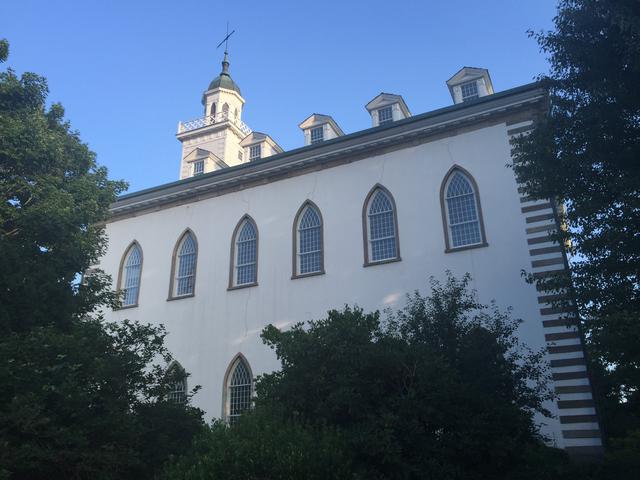
Kirtland Temple
Always a temple-building people, Mormons built their first temple in northern Ohio, the headquarters of the Church from 1831 until 1838. The Kirtland Temple was dedicated in 1836.
The temple served the members for two years before Church members were forced to abandon the structure and move to Nauvoo, Illinois, due to intense persecution.

Whitney store
Church founder Joseph Smith and his wife Emma lived for a time in the historic Newell K. Whitney Store in Kirtland, which has been restored for visitors to tour.
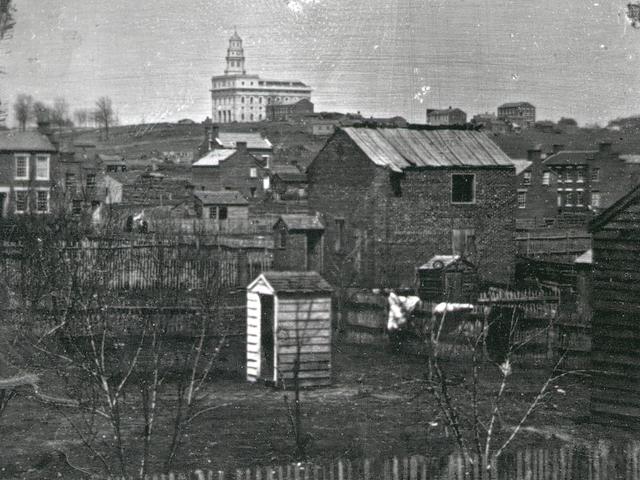
Old Nauvoo
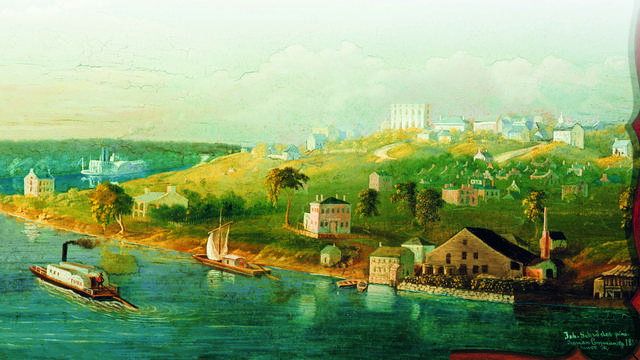
Nauvoo on the Mississippi River
After suffering from ongoing persecution, the Latter-day Saints left Kirtland and moved to Jackson County, Missouri, and then moved again to Illinois, where they turned unwanted swampland along the Mississippi River into a thriving community named Nauvoo. The city, which became one of the largest cities in Illinois, included approximately 16,000 Mormon residents and was an important center of commerce on the upper Mississippi River.
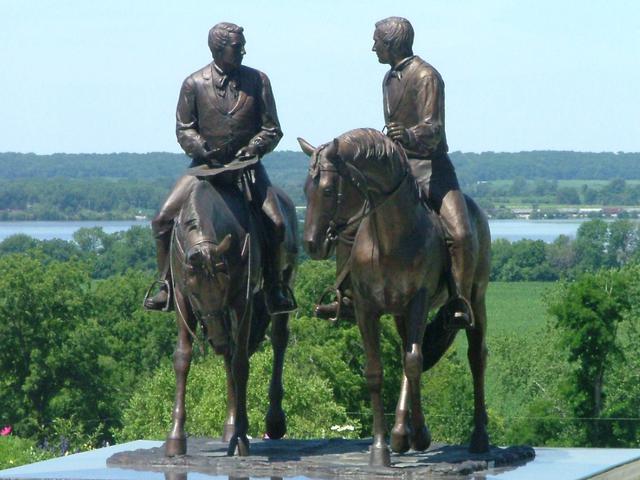
Joseph & Hyrum Smith on horseback riding into Nauvoo
Continuing the Church’s temple-building efforts, the Latter-day Saints constructed the Nauvoo Temple, but the relative peace and prosperity of the time was short-lived, as mobs killed the Mormon prophet, Joseph Smith, and his brother Hyrum on June 27, 1844, and then drove the Mormons out.
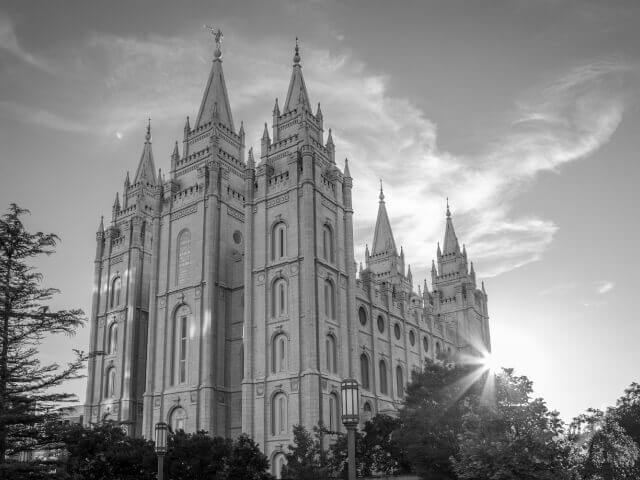
Brigham Young is about 49 years old in this 1850 photograph. He led the Latter-day Saints from Nauvoo, Illinois, to the Rocky Mountains, where he was instrumental in settling not only Salt Lake City but also other cities and towns in Utah and throughout the West. He served as Church president from 1847 to 1877 and served for a time as territorial governor and Indian agent.
The pioneer trek helped shape the development of the American West.
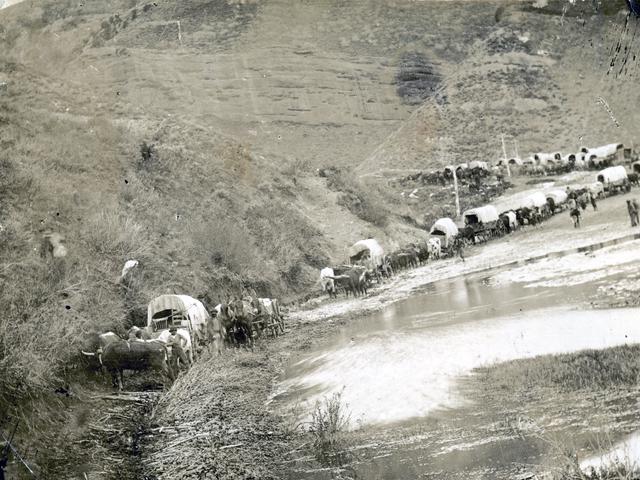
An 1866 party of pioneers in Echo Canyon, east of the Salt Lake Valley
Not all early members of The Church of Jesus Christ of Latter-day Saints were rugged frontiersmen who regularly camped under the stars. They were also shop owners, craftsmen, farmers, cabinet makers, teachers, mill workers, builders and blacksmiths.
Latter-day Saints went west to escape religious persecution. They left behind comfortable homes and profitable farms and braved the 1,300-mile journey across the plains under sweltering sun as well as in freezing winter storms.
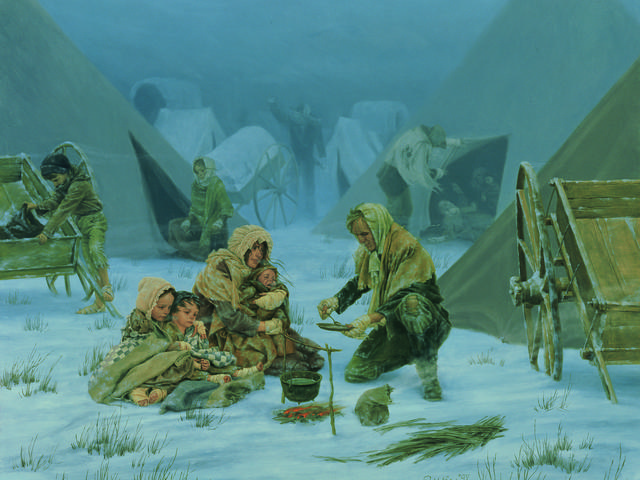
An illustration of a father trying to start a fire to feed his starving family. Depicted here are some of the handcart pioneers.
One of the many compelling stories of faith of the pioneers is that of Mary Fielding Smith, the widow of Hyrum Smith (President Joseph Smith’s brother), and her son Joseph F. Smith (sixth president of the Church, from 1901 to 1918).
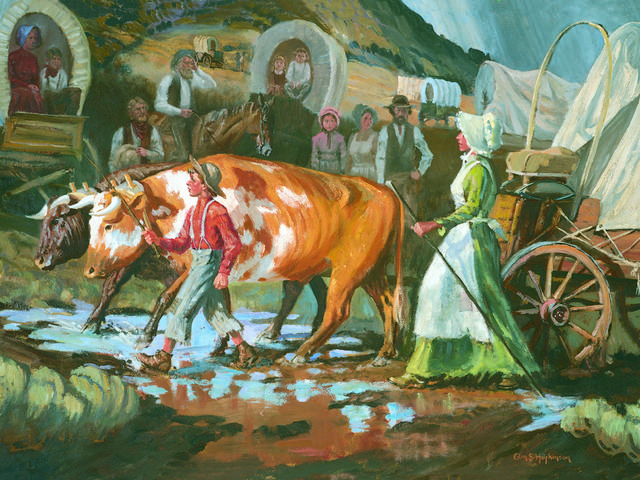
They were traveling across the plains in a covered wagon pulled by a yoke of oxen. Young Joseph, about eight years old, recalled that after the oxen became ill, his mother prayed that the animals might arise and move forward, and “to the astonishment of all who saw,” they “got up and we drove along.” Mary Fielding Smith and her family were traveling across the plains with the first large group of Mormons that arrived in the Salt Lake Valley in September 1847.
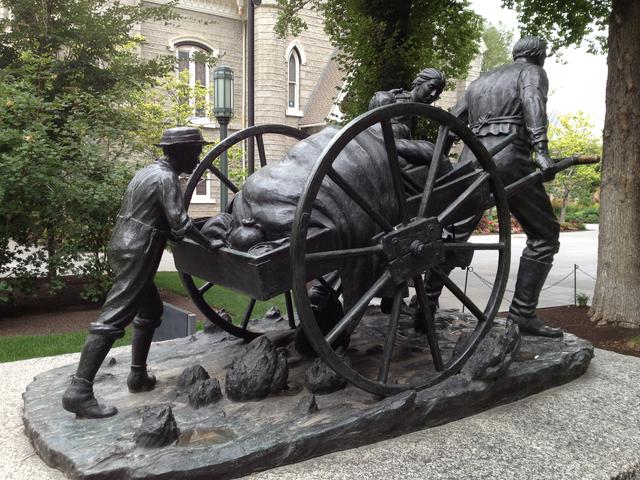
A statue on Temple Square honoring the Mormons who traveled across the plains to Utah pulling handcarts
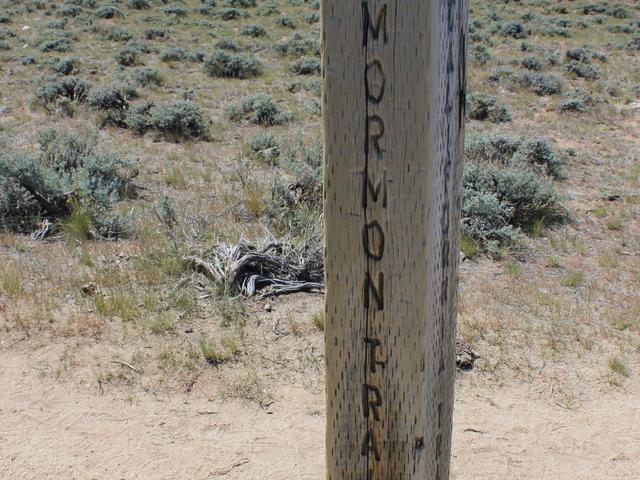
Mormon Trail marker
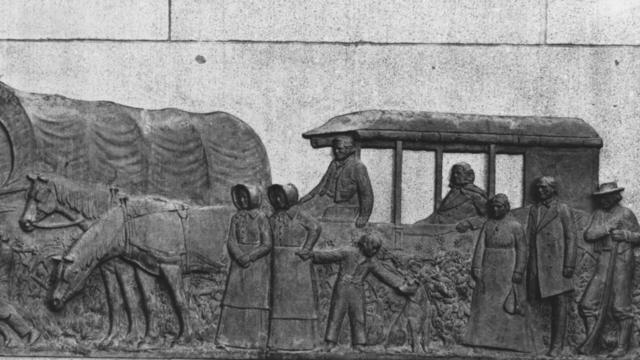
Depiction on the This is the Place monument at This is the Place Heritage Park in Salt Lake City, Utah, of the arrival of Brigham Young and others in 1847. Brigham Young is riding in a wagon, with Wilford Woodruff driving.
On July 24, 1847, Brigham Young, president of The Church of Jesus Christ of Latter-day Saints, saw the wide Salt Lake Valley from his wagon and declared, “This is the right place. Drive on.”
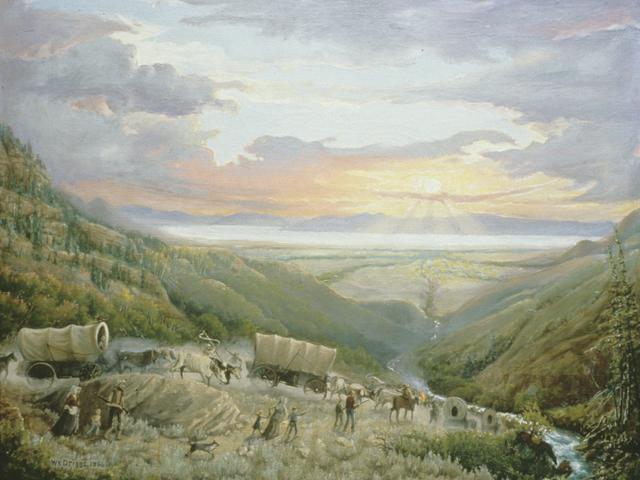
The first group of Mormon pioneers entered the Salt Lake Valley through Emigration Canyon between July 22 and 24, 1847. This vanguard company arrived in July; the first large body of church members arrived in September.
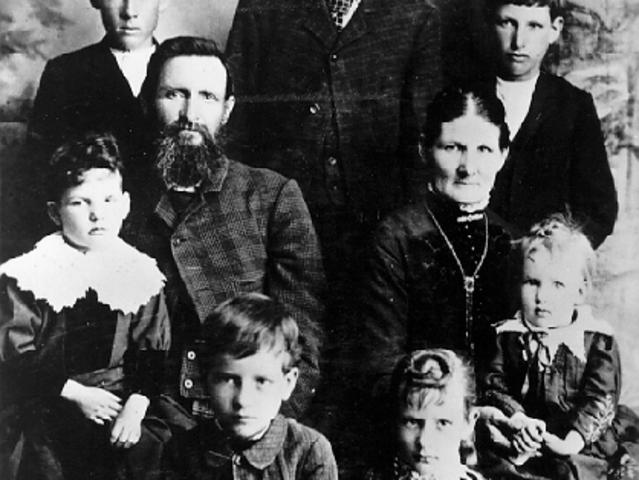
Portrait of a pioneer family
The pioneers wasted little time in beginning to settle the valley, as they started immediately upon arrival to prepare the soil for planting. Because they arrived in mid-summer, the growing season was short.
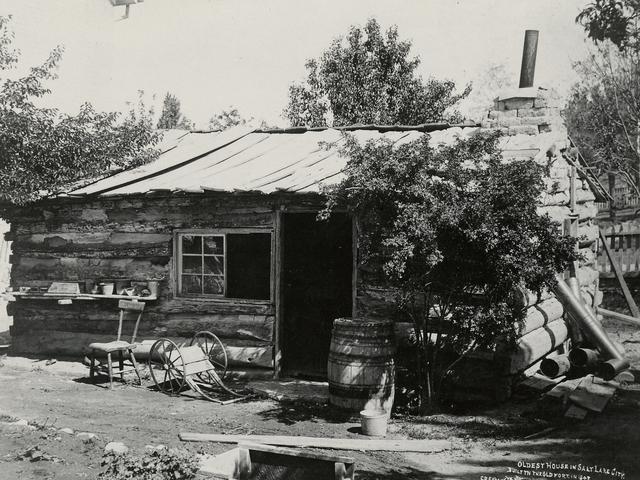
One of the oldest houses in Salt Lake City, built in 1847and owned by Osmyn M. Deuel
The settlers built ditches for irrigation, planted seeds and trees and felled timber in the nearby mountains to build homes.
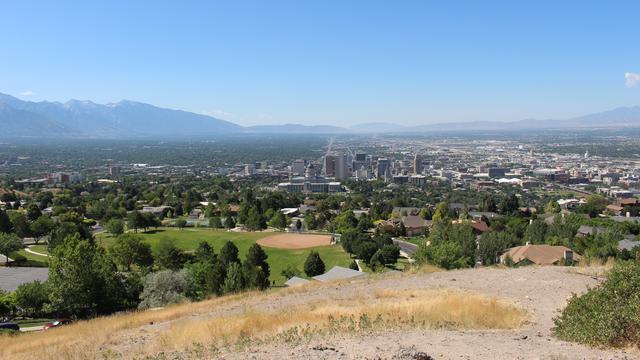
A July 2016 view of the Salt Lake Valley from a place near Ensign Peak
Within days of arriving in the valley, early Church leaders walked up a hill on the north end of the valley (later known as Ensign Peak) to get the lay of the land, explored in nearby canyons, designated the center of the new settlement and selected the spot for the temple.
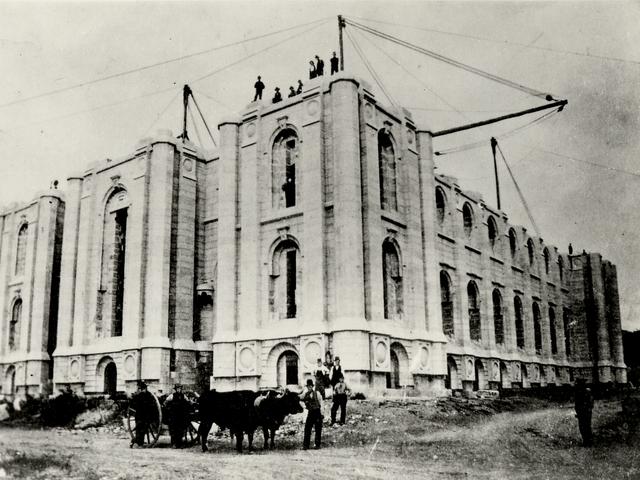
Workers construct the Salt Lake Temple (ca. 1870-1880)
There are now 150 operating temples located throughout the world.
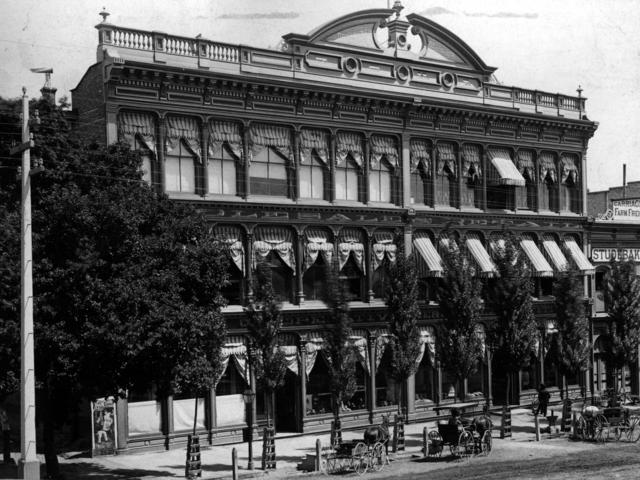
ZCMI was the first department store west of the Mississippi River
American historian Wallace Stegner wrote about the Mormons, noting that “the story of their [the pioneers’] migration is more than the story of the founding of Utah. The Mormons were one of the principal forces in the settlement of the West.”
Parades marking the 24th of July have taken place from 1849 to today, known at different times as the “Pioneer Days Parade,” “Covered Wagon Days,” and the “Days of ’47.”
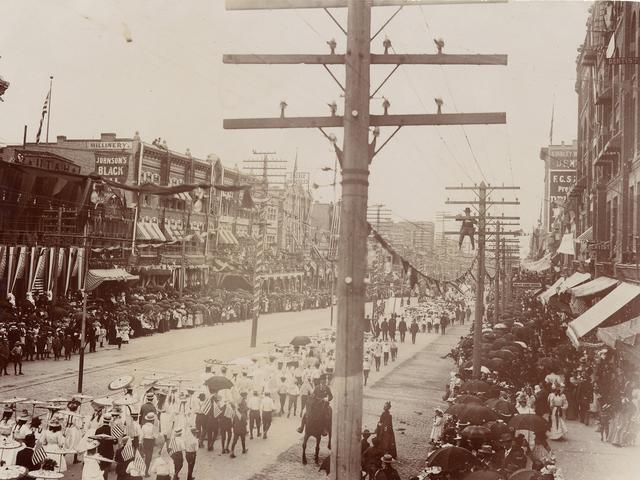
Pioneer Days Parade in 1897
The day the first covered wagons of Latter-day Saints entered the Salt Lake Valley has long been celebrated by the Church and was later designated a state holiday.
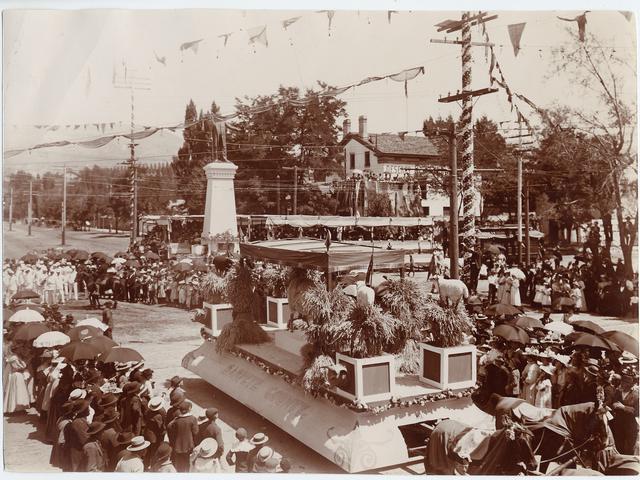
Pioneer Days Parade in 1897
In 1897, 50 years after the Mormon pioneers’ arrival, George Edward Anderson photographed the surviving pioneers of 1847.
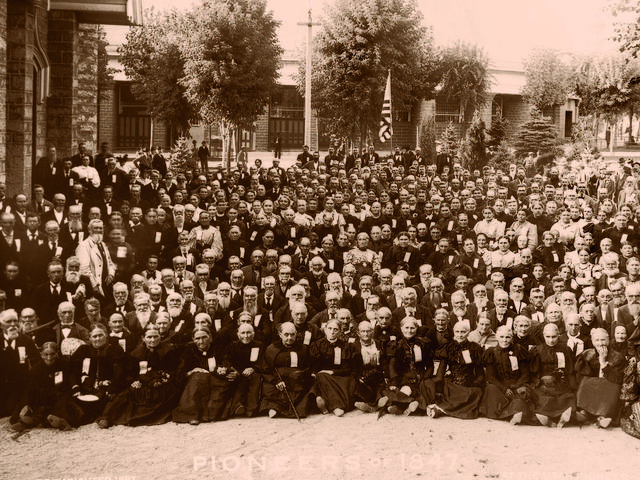
This photograph of surviving pioneers of the 1847 trek was taken on July 24, 1897, on the 50th anniversary of the arrival of the pioneers to the Salt Lake Valley. Most pioneers in this photo arrived in the Salt Lake Valley in September 1847. The portrait was taken on Temple Square.
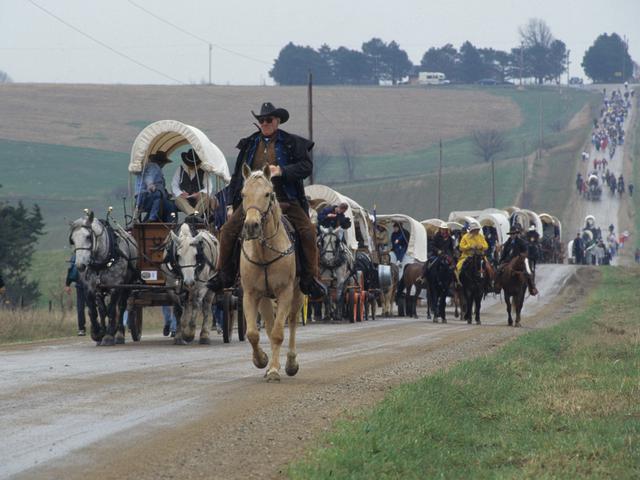
In 1997, the Church celebrated the 150th anniversary of the arrival of the Mormon pioneers to the Salt Lake Valley. The celebration ran from January to July and included such things as a worldwide day of service for members of the Church to help in their communities, concerts by the Mormon Tabernacle Choir, pioneer exhibits and a two-day program of music and dance.
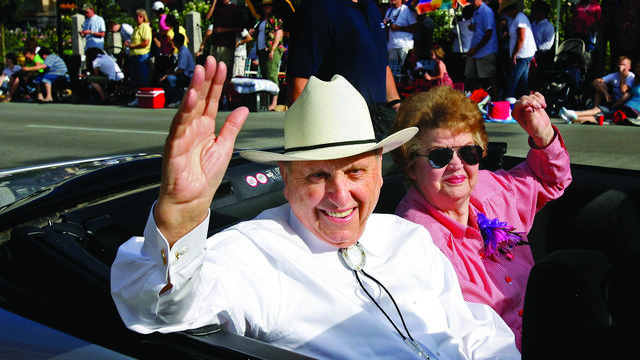
President Thomas S. Monson and his late wife, Frances, enjoy riding in the Days of ’47 parade in Salt Lake City, July 24, 2006.
Photo courtesy of the Deseret News/LDS Church News